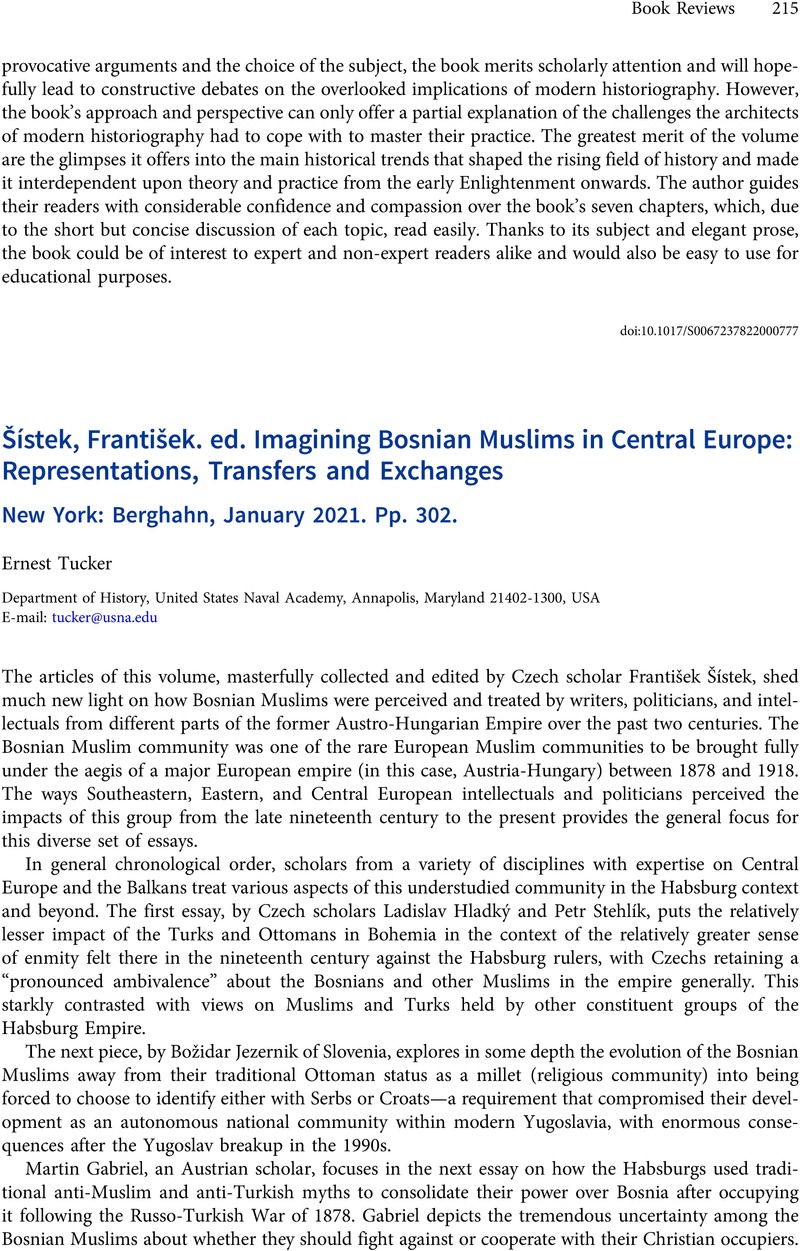No CrossRef data available.
Article contents
František Šístek. ed. Imagining Bosnian Muslims in Central Europe: Representations, Transfers and Exchanges New York: Berghahn, January 2021. Pp. 302.
Review products
František Šístek. ed. Imagining Bosnian Muslims in Central Europe: Representations, Transfers and Exchanges New York: Berghahn, January 2021. Pp. 302.
Published online by Cambridge University Press: 23 January 2023
Abstract
An abstract is not available for this content so a preview has been provided. Please use the Get access link above for information on how to access this content.

Information
- Type
- Book Review: General
- Information
- Copyright
- Copyright © The Author(s), 2023. Published by Cambridge University Press on behalf of the Center for Austrian Studies, University of Minnesota


